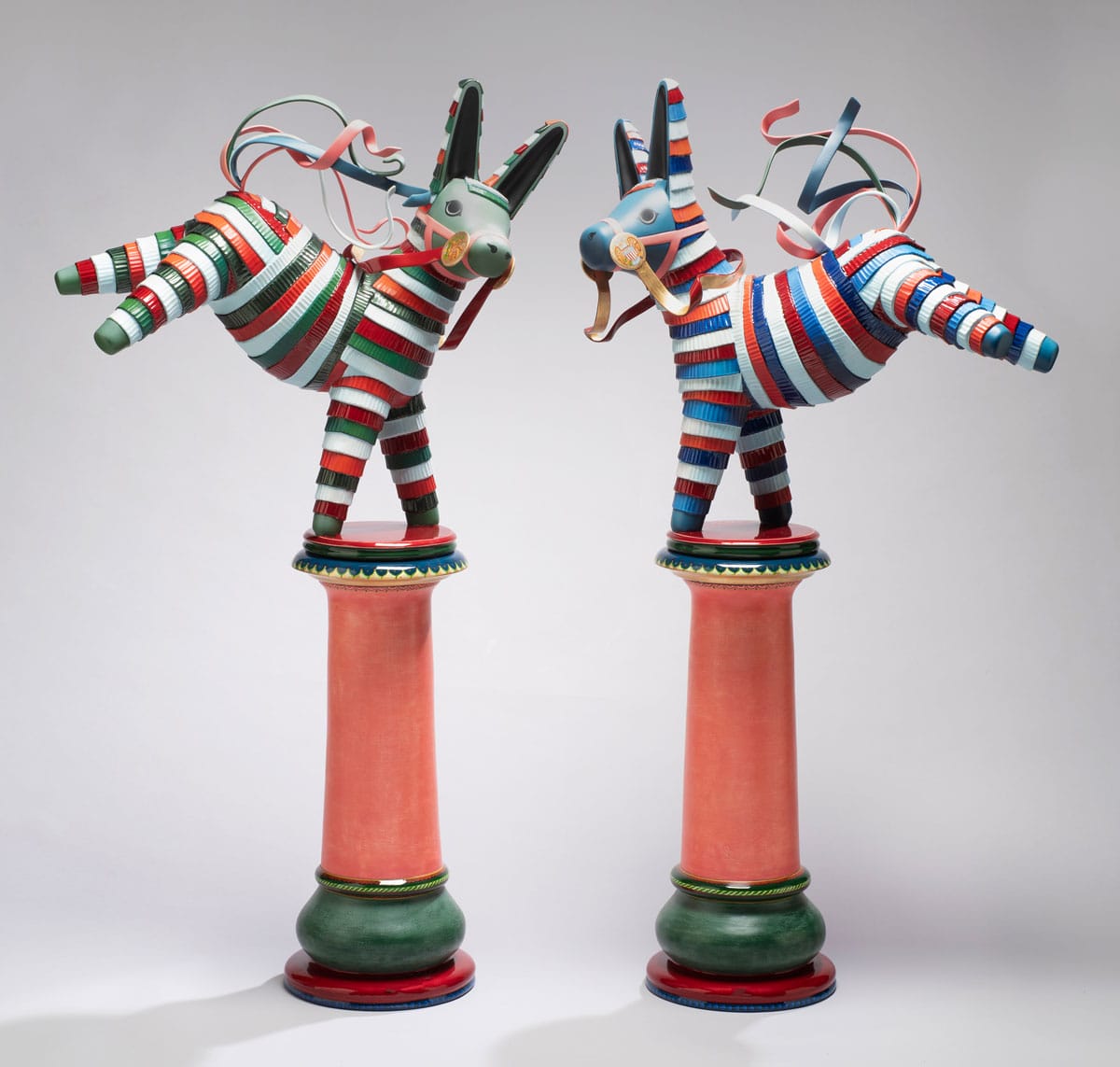
The Vilcek Foundation has commissioned a new sculpture by Sergio Tapia titled ¡Mexican! American!. The work consists of two colorful piñata donkey figures captured in motion. The forms recall the vibrant papier-mâché vessels decorated in tissue paper and bright streamers associated with birthdays and cultural festivities of Mexico. Paired together, the sculptural pair evokes a joyful and nostalgic interplay between familiar forms of the Southwest, U.S., and Mexico. ¡Mexican! American! uses each donkey figure to signify the two bordering countries of the U.S. and Mexico. The playful nature of these figures suggests nostalgia, as well as a political reflection of themes of immigration and transformation across borders.
Tapia comes from a long line of New Mexican artists. Based out of Santa Fe, he hails from the active workshops of his mother, Star Sanchez and his father, famed craft artist Luis Tapia. The environment of Tapia’s artistic formation stressed craftsmanship and the meticulous nature of reflecting cultural heritage. The overarching training during Tapia’s upbringing was the santero craft tradition defined by its wooden representations of religious icons. Tapia infuses this religious figure art-making practice with popular cultural expressions, like lowrider car culture. Known for their rebellious and artistic ethos, lowrider communities reflect elevated and artistic customization to the familiar and utilitarian automobile form. The automotive pastime embraces rich color and expressive chrome and significantly influences the artist’s work. In ¡Mexican! American!, Tapia uses automotive paint to decorate his figures in the colors of each respective country’s flag: Mexico in green, white, and red and the U.S. in red, white, and blue. Chicano artists like Luis Jiménez and Rúben Ortiz Torres are canonical interpreters of this aesthetic rethinking car culture’s flamboyance and luminosity, equally embracing the lowrider’s societal color brilliance and societal impact. Tapia continues this practice by incorporating automotive paints and techniques throughout his creative expression.
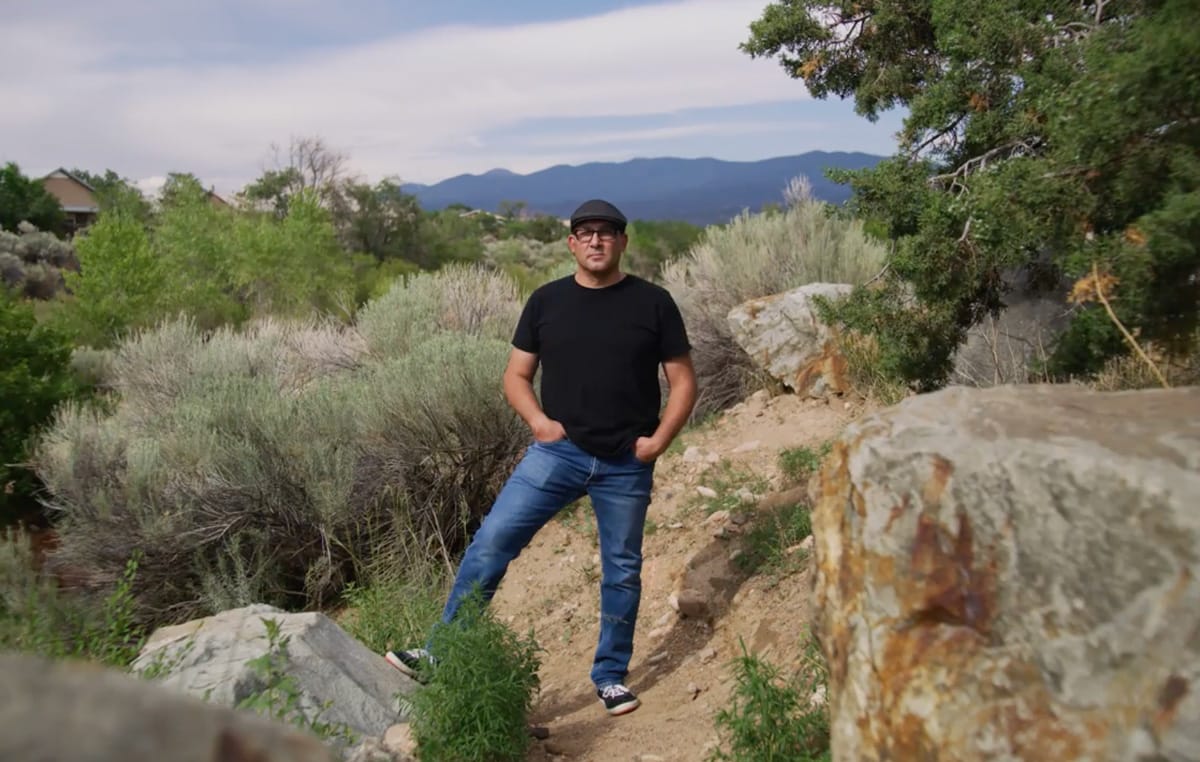
For ¡Mexican! American!, the burro is a symbol of the unnamed Mexican immigrant experiencing new spaces. There is tension and uncertainty in this mirrored pairing—one that reflects the personal change of Mexican immigrants in the U.S. The figures seem identical but punctuate the mental transition of these ever-moving communities.

¡Mexican! American! piñata form details the medium’s cherished and ephemeral nature as an object meant to be broken and discarded. The characteristics of this form prompt whimsy and delight. Typically, the piñata is embellished colorfully with colored tissue paper over an inner frame made of cardboard, bamboo, or newspaper. With cultural diaspora, piñatas in all shapes and configurations now can be purchased at local grocery stores. As immigration happens, so do such cultural icons get integrated into U.S. culture.
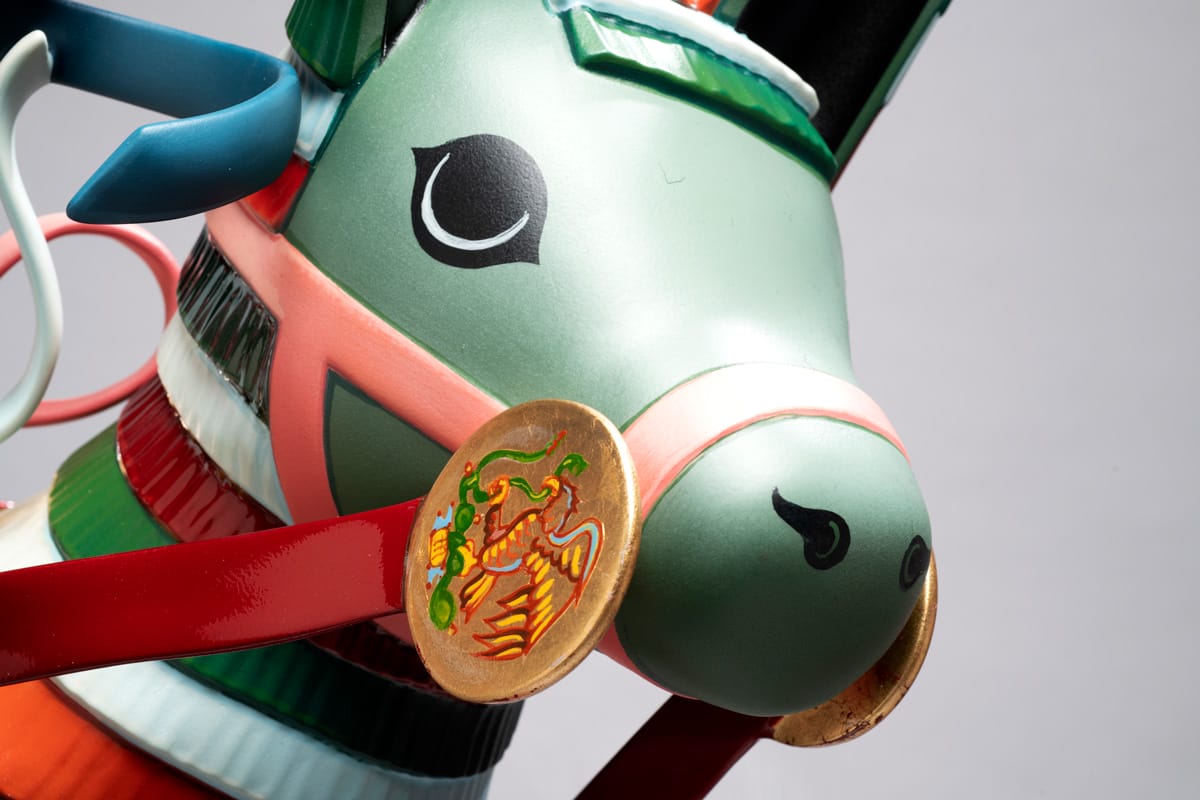
Tapia highlights one of the piñata’s canonical forms, the burro or donkey. The donkey is a symbol for Mexico as a whole. With the pastoral idealization and the strategic marketing of Mexico as a tourist destination in the 20th century, the donkey references a rural yesteryear where the animal was critical to agricultural labor. Often, stereotypical images affiliate the burros with economically disadvantaged agriculture; as such, the animal defines an affordable substitute for expensive machinery like the tractor.
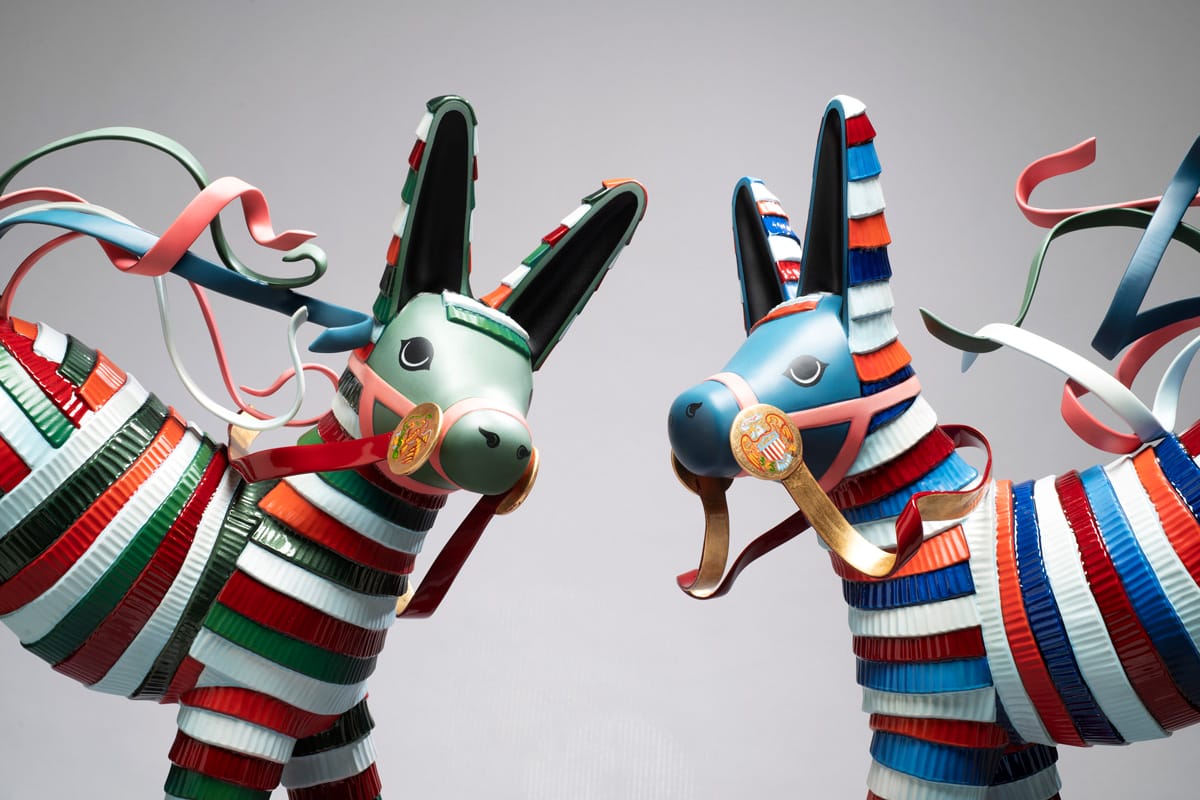
The burropiñata shape was the artist’s favorite form growing up in New Mexico. In the Southwest, the form is ubiquitous as part of restaurant design, tourist memorabilia, and all aspects of Mexican visual culture. Tapia reminisces on the form through this sculptural set to show the image as a cultural constant and colorful reminder of the legacies and emotional toils of the migrant experience.
Related News
Vilcek Foundation Awards $250,000 to Immigrant Artists
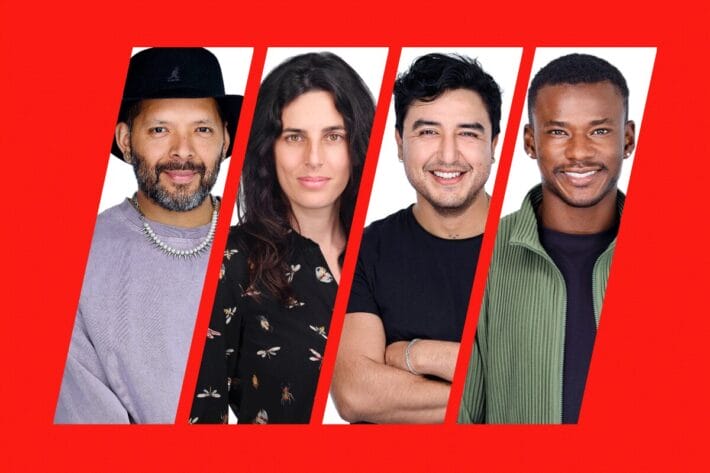
Liberation and Belonging: The Artistic Vision of Jeffrey Meris

Vilcek Foundation acquires Christo’s Wrapped Oil Barrels (1958)
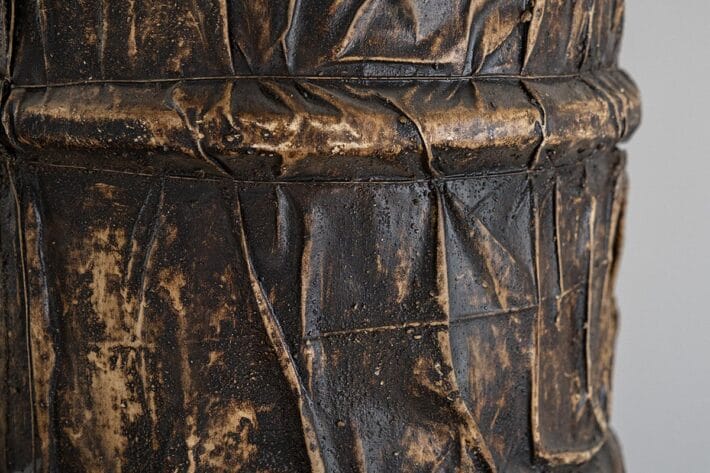
You may also be interested in
Storm King Art Center
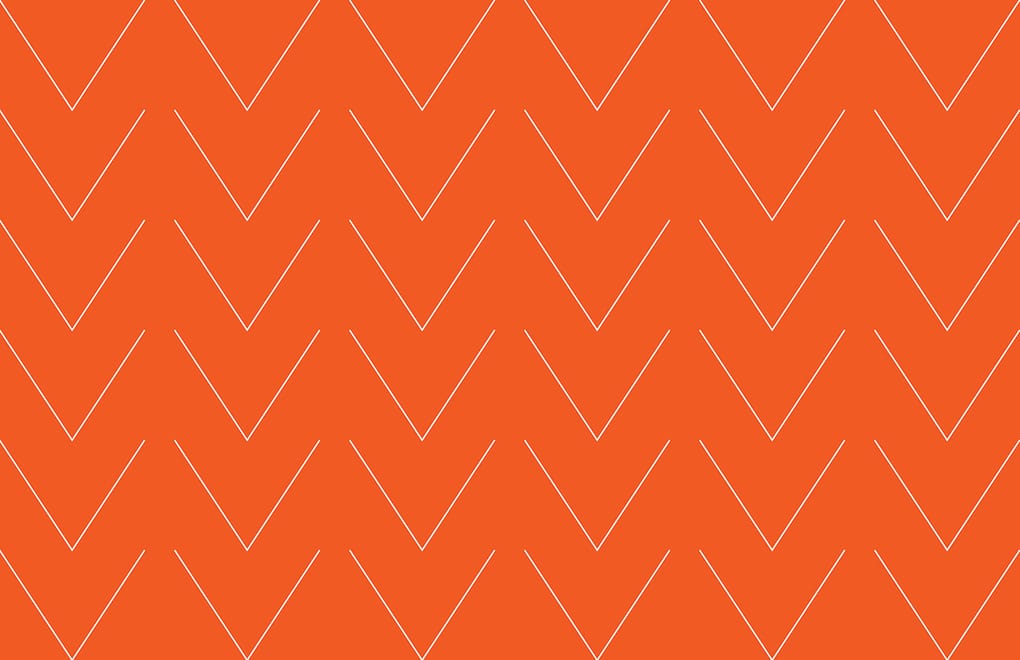
Jeffrey Meris

Iman Issa
